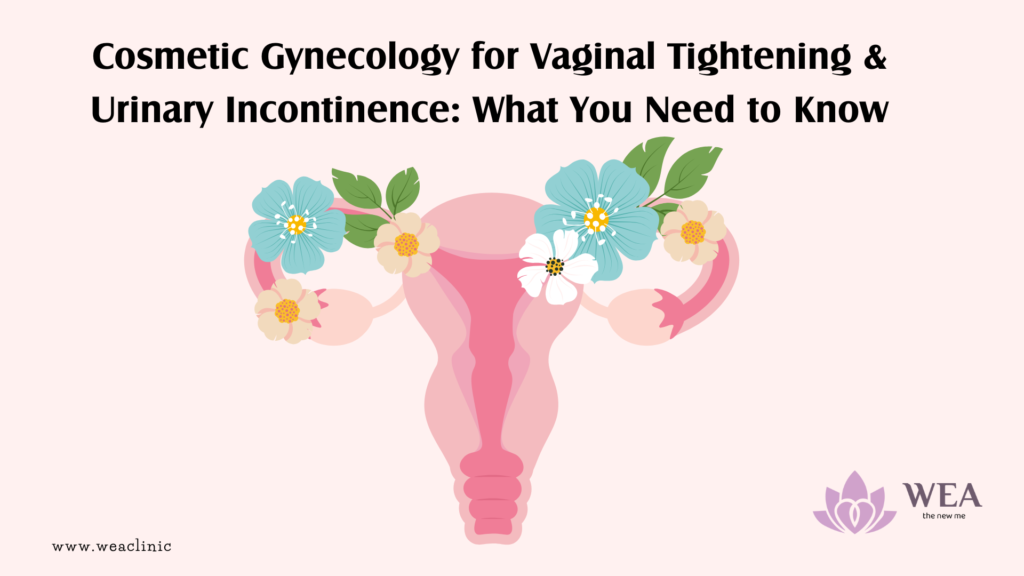1. Introduction to Blepharoplasty and Trifecta Lift
Blepharoplasty improves eyelid appearance by carefully removing excess skin. It enhances the upper eyelid’s form and reduces vision obstruction. The trifecta lift addresses lower eyelid bags and sagging. This combined procedure yields youthful and refreshed eye contours. Many women in Chennai seek this cosmetic eye surgery.
Cosmetic eyelid surgery questions arise regarding safety and outcomes. Patients research blepharoplasty cost, recovery, and the expected duration.
Data shows India’s cosmetic surgery market revenue grew significantly. India accounted for 7.4% of the global market share value. India will see nearly $11.6 billion in the market by 2030. Chennai hosts top cosmetic clinics for eyelid procedures locally. WEA Clinic offers personalized blepharoplasty and trifecta lift consultations.
2. Vaginal Tightening Techniques Explained
Vaginal tightening improves tissue firmness and elasticity. It effectively addresses relaxation after childbirth or aging. Techniques vary from energy-based devices to surgery. Laser and radiofrequency minimally invasive therapies stimulate collagen production. Collagen boost transforms vaginal walls over time. Labiaplasty also enhances symmetry and comfort.
Radiofrequency vaginal tightening uses controlled heat. It requires three treatment sessions spaced four weeks apart. Laser vaginal rejuvenation offers minimal downtime and comfort. Patients experience mild warmth during sessions. Effects appear gradually over six to eight months. Results last for up to two years.
Vaginoplasty tightens lax vaginal tissues surgically and effectively. It removes excess skin and precise scarring issues. Most procedures complete within two hours. Anesthesia options include local or general sedation comfortably. Recovery takes four to six weeks. Follow-up visits guide healing and outcome monitoring carefully.
Platelet-rich plasma further boosts popular natural tissue regeneration highly. It uses patient’s own blood component concentrate state-of-the-art safely. Sessions last thirty to forty brief minutes. Downtime is minimal with quick comfortably recovery. Costs vary based on technique and clinic affordability. Consult WEA experts for personalized treatment plan today.
3. Non-Surgical Rejuvenation Options
Non-surgical vaginal rejuvenation uses radiofrequency (RF) and laser devices to tighten vaginal walls without incisions. RF probes deliver controlled heat to stimulate collagen production over time. Laser systems target superficial tissue to promote firmness and improve moisture. Platelet-rich plasma (PRP) injections can further enhance natural tissue regeneration. Sessions typically last five to thirty minutes, depending on device settings. Procedures require no general anesthesia, though topical numbing may be offered.
Most treatment plans involve three sessions, spaced four weeks apart. Patients report only mild warmth during therapy. Slight vaginal discharge can occur for one to three days after treatment. Intercourse and tampon use typically resume within days. Final tightening results emerge gradually over one to three months.
4. Surgical Enhancement Procedures
Vaginoplasty surgically tightens and reshapes the vaginal canal for lasting firmness. It can correct congenital anomalies or post-childbirth laxity with targeted tissue removal. Surgery generally takes one to two hours under local or general anesthesia. Patients often go home the same day or after an overnight stay. Full recovery spans five to seven weeks, with follow-up visits to monitor healing.
Labiaplasty refines the labia minora and majora to enhance symmetry and comfort. The procedure lasts thirty to ninety minutes, typically under local anesthesia. Mild pain and swelling are common for the first week. Patients resume light work in about one week. Sexual activity generally resumes after six to eight weeks
5. Understanding Urinary Incontinence
Urinary incontinence (UI) affects about 21.8% of Indian women according to hospital data. Stress incontinence, where leaks occur during coughing or lifting, is most common Mixed incontinence combines stress and urge symptoms, seen in about 3.7% of cases. Risk factors include higher body mass index, multiparity, and menopause status. UI can significantly impair quality of life and social engagement. Yet many women delay seeking treatment for years due to stigma.
Health surveys report that only about 25% of women with UI seek care. Both urge and stress types can coexist, complicating management plans. Accurate diagnosis often involves bladder diaries and pad tests. Urodynamic studies help tailor interventions when conservative measures fail. Early intervention improves outcomes and prevents progression. Patient education on pelvic health is vital for sustained improvement.
6. Pelvic Floor Strengthening Therapies
Pelvic floor physical therapy (PFPT) treats UI by enhancing muscle strength and coordination .Therapists assess posture, gait, and internal muscle function before designing a plan. Treatment may include manual techniques, biofeedback, and targeted exercises. Vaginal dilators help relax and stretch tight pelvic muscles when needed. Home exercise plans reinforce office sessions for consistent progress Electrical stimulation can supplement training for severe muscle weakness.
Studies show PFPT yields significant improvements in both stress and urge UI. Typical programs run for eight to twelve weekly sessions. Many women regain full bladder control within four to six weeks. PFPT carries minimal risk and avoids surgery for suitable candidates. It also supports post-surgical rehabilitation when combined with procedures. Patient adherence to home regimens predicts long-term success.
7. Combined Aesthetic and Functional Treatments
Some centers offer combined protocols targeting both vaginal laxity and UI. RF and laser treatments can improve tissue tone and reduce mild leakage. Incorporating PFPT alongside energy-based therapies enhances functional gains. Surgically, sling procedures may be paired with vaginoplasty for severe incontinence Combined plans require interdisciplinary teams of gynecologists and physiotherapists. Patient satisfaction tends to be higher with holistic approaches.
Customized treatment maps address each woman’s aesthetic and wellness goals. Pre-treatment assessments include pelvic exams and urodynamic testing Ongoing monitoring ensures both cosmetic and functional benchmarks are met. This synergy minimizes repeated interventions and optimizes outcomes. Education on lifestyle factors and pelvic health supports lasting results Integrated care fosters confidence, sexual satisfaction, and bladder control
8. Safety Standards and Expert Consultations
In 2018, the FDA warned against unapproved energy-based vaginal devices for rejuvenation. These devices lack formal clearance for treating laxity or dryness. Adverse events reported include burns, scarring, and chronic pain. Clinicians must use only FDA-cleared equipment for intimate procedures Board-certified gynecologists and plastic surgeons uphold rigorous sterility protocols. Informed consent should cover risks, benefits, and alternative therapies.
Pre-procedure consultations involve detailed history, pelvic exam, and imaging if needed Clinics should maintain transparent pricing and accreditation credentials Patients are advised to verify practitioner training in cosmetic gynecology Second opinions help clarify complex cases and set realistic expectations. Emergency protocols must be in place for unexpected complications Continuous professional development ensures adoption of best practices.
9. Recovery Protocols and Aftercare
Post-laser or RF treatments usually see no downtime. Mild swelling and discharge resolve within a few days.. Patients can resume light daily tasks immediately. Intercourse is often permitted after one week, per device instructions. Avoid strenuous exercise for one to two weeks. Follow-up visits verify tissue healing and symptomatic relief.
After vaginoplasty or labiaplasty, patients rest for five to seven d.ays Sutures dissolve over two to three weeks. Light walking aids circulation, while heavy lifting is deferred six weeks. Pain is managed with prescribed analgesics as needed. Sitz baths and gentle hygiene support comfort and prevent infection. Long-term results consolidate over three to six months.
10. Empowerment Through Aesthetic Wellness
Cosmetic gynecology can boost self-esteem and body image significantly. Many women report enhanced sexual satisfaction after treatment. Psychological benefits include reduced anxiety around intimacy. Improved bladder control fosters social confidence and activity. Open discussions on intimate health reduce stigma and normalize care. Support groups and counseling help sustain emotional well-being.
By combining medical science with aesthetic goals, women reclaim agency over their bodies. Educational resources empower informed decisions and realistic expectations. Clinics offering holistic care integrate mental health support. Celebrating diverse definitions of beauty fosters inclusive wellness. Empowered patients become advocates for broader awareness. Cosmetic gynecology thus stands at the nexus of health, confidence, and self-expression




